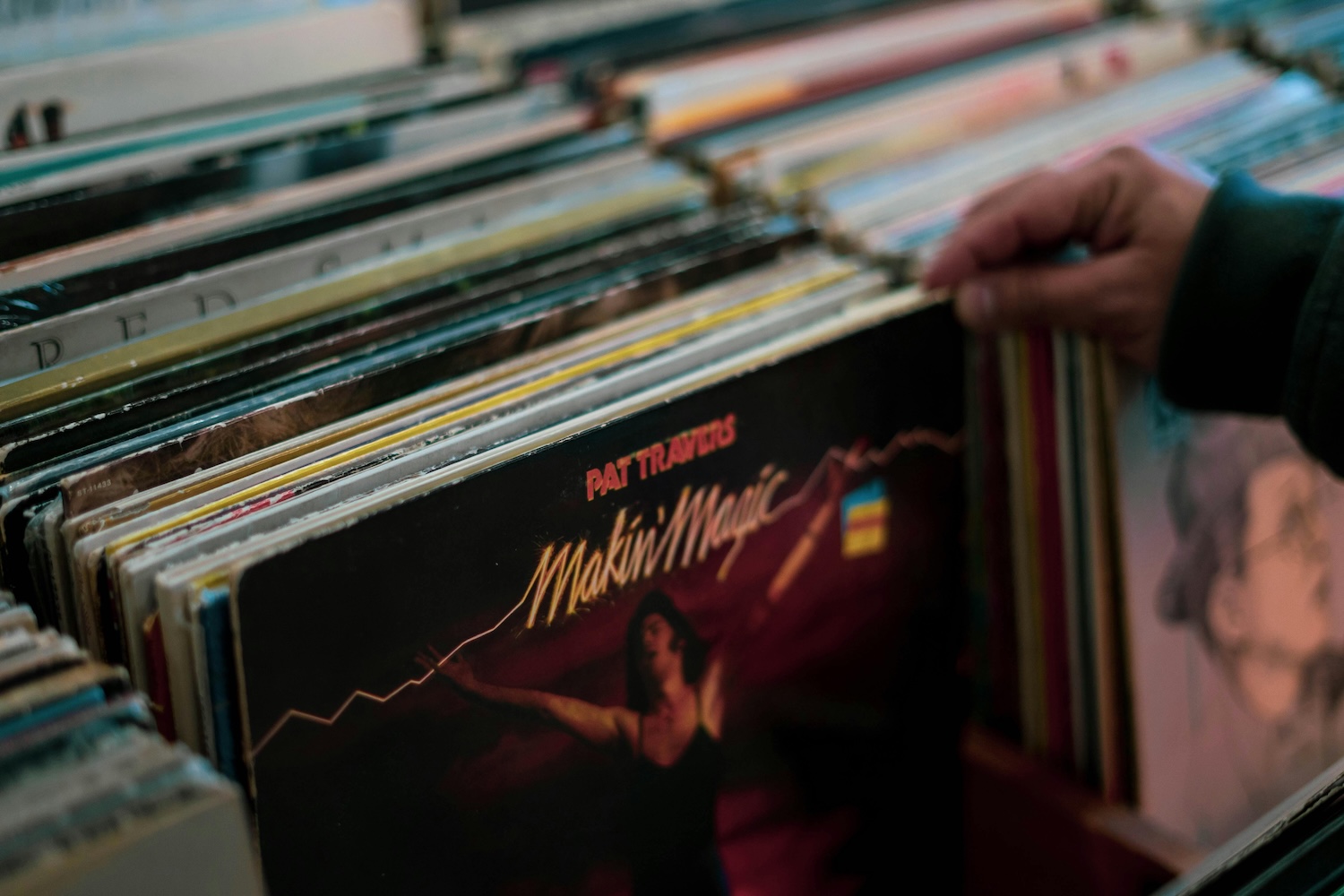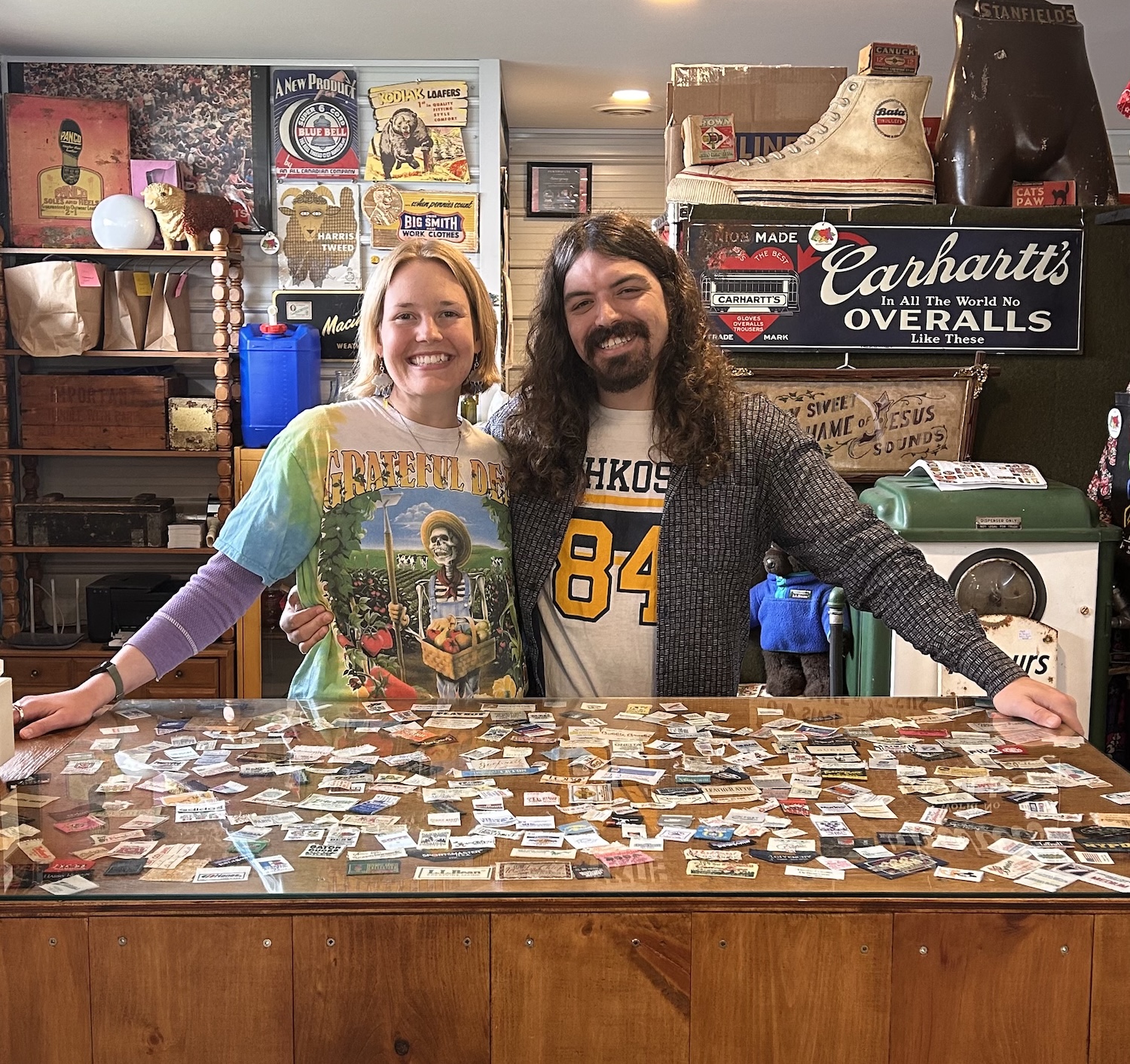
Everything you need to know about: Boho vintage style
What makes something bohemian style? Get the history, cultural context and materials behind this timeless trend
Boho style is less a trend and more a constant in the vintage world, which is why it’s the first entry in our Trend Watch series.
Trend Watch helps vintage sellers and buyers to learn about art and design movements — so if you’re seeking information about boho decor, boho furniture or boho fashion, here’s what you need to know.
Have more to share with the community? Let us know in the comments!
Why boho is popular
“Boho” (short for bohemian) is an aesthetic that has evolved countless times over centuries. The name connotes the adventurer, the wanderer, the traveller and the artist. To dress or decorate with a boho style is to buck convention, to mix patterns and styles, to be carefree.
Modern boho style is closely associated with hippie culture of the 1960s and 1970s, so vintage pieces from that era are currently coveted in the community for their casual-but-chic look, often achieved through natural materials and relaxed designs that prioritize comfort and flow.
A brief history of “bohemian”
As early as the 1500s, French writers, artists and intellectuals used “bohémien” to describe the lifestyle of the nomadic Romani people, who they erroneously believed had originated from Bohemia (see the cultural context section below for more on this).
By the early 19th century, authors and artists in France were moving into Romani neighbourhoods, where the cost of living was lower. As the French creative types banded together over anti-establishment views and a shared vision for free love, they identified with the “unconventional” approach of the Romani, and use of “bohémien” began to proliferate.
Word spread to England and soon “bohemian” had become synonymous with any artistic person who led a nonconformist lifestyle. And that’s the definition that has stuck around ever since.
Writers and artists such as William Makepeace Thackeray (Vanity Fair), Henri Murger (Scènes de la vie de Bohème) and Giacomo Puccini (La bohème) were instrumental in popularizing the bohemian lifestyle, romanticizing it through tales of “starving artists,” and turning “bohemianism” from idea into ideal.

Because they challenged social norms and were often struggling financially, bohemians became known for their eclectic style, which often included secondhand finds. Bohemian women who eschewed the Victorian standards of dress would wear relaxed, “free-flowing” clothing.
Over the years, bohemianism spawned many subcultures, including the Beat movement in the 1950s and hippie counterculture in the 1960s and 1970s. The hippie era — think “flower power” and Woodstock — and the 1970s trends of disco, houseplants and rattan furniture is what modern boho style is based on.
And the boho ideal continues to evolve. Author David Brooks wrote in his 2000 book Bobos in Paradise that the “impoverished artist” narrative of bohemians has become less popular, giving way to what he calls “bourgeois bohemians” — or bohemians with money to burn.
While bohemianism as a practice still exists, it’s the “bohemian style” that has gained widespread appeal over the past 50 years. Vintage bohemian style as we know it today pulls from the aesthetics of the 1960s and 1970s, and is influenced by the “hippie-chic” resurgence in the 1990s and the “boho-chic” and “festival fashion” eras of the early 2000s and 2010s.
“Today’s bohemians seek to erase the distinctions between work and play, and our living spaces reflect that lack of boundaries,” writes Justina Blakeney, designer and creator of The Jungalow, in her book The New Bohemians: Cool and Collected Homes.
“Our new bohemian lifestyle is rooted in freedom: free-spirited, free-form, and free of rules. We bohemians chase free Wi-Fi, we blog from Brooklyn Laundromats, and we check our e-mail barefoot in Tulum. We arrive early to flea markets but late to farmers markets. We are vintage hounds.”

Cultural context
In its truest sense, Bohemian (capital B) refers to the people of Bohemia, a region in what’s now known as the Czech Republic.
Bohemia was first mentioned in historical texts in 1 A.D. Over the years, it went through several eras of monarchial rule, primarily as the Kingdom of Bohemia from 1212 until the end of World War I in 1918, when it became part of Czechoslovakia. After the dissolution of Czechoslovakia in 1993, the entirety of the Bohemia region remained in the Czech Republic.
So how did we get to the lowercase b in “bohemian?”
As mentioned earlier, the French popularized the word “bohémien” to describe the nomadic, “free” style of the Romani people, who they mistakenly believed had originated from the Bohemia region.
But the Romani are actually from northern India, and migrated across Europe over centuries — so while there may have been Romani in Bohemia, not all Bohemians are Romani. They are two distinct ethnic groups.
The use of “bohémien” to describe the lifestyle of the Romani people (and, inadvertently, the Bohemians) is especially problematic because at the time, the Romani were also frequently referred to as “Gypsies” — a pejorative term that insinuated untrustworthiness.
This was further complicated by the fact that “Gypsies” were thought to be from Egypt. Bohemians, Romani and Egyptians — that’s three ethnic groups mixed up in one stereotype.

So what does all of this have to do with boho fashion or boho decor as we know them today?
Language evolves over time, and while “bohemian” and “boho” are now widely accepted terms when it comes to describing a particular eclectic aesthetic, it’s important to be aware of their origins and the context in which they should be used.
When we talk about modern boho fashion and boho decor, we do so with appreciation and understanding of where the words came from:
- Bohemian (uppercase B) is a person from Bohemia and is not necessarily tied to the nomadic and unconventional lifestyle we associate with “bohemian” today;
- bohemian (lowercase b) is a term that’s been used for about 200 years to describe a creative or artistic person who upholds the ideals of the bohemianism movement; and
- bohemian or boho style (also lowercase b) has evolved over hundreds of years, characterized by an eclectic, non-conformist or “free” approach to decor or dress.
Some other terms that can be used to describe the modern boho aesthetic include eclectic, hippie, new age, free-spirited, nomad, wanderer, adventurer, traveller, etc. Unless you’re of a particular ethnic group that self-identifies as Gypsy, it’s best to avoid use of the term “Gypsy” or lowercase “gypsy” — these may be considered slurs.
Continued below
Get vintage intel with our free tip sheets
Browse them here
Continued from above
What materials to look for
Anything goes when it comes to boho vintage fashion — part of its appeal is mixing pieces from different styles, eras and geographic regions for that “creative” or “artistic” look.

Here’s what to look for when shopping for boho vintage clothes:
- Retro patterns such as ikat and paisley
- Denim jackets, distressed denim, denim flares or wide-leg pants
- Loose-fitting tops and dresses
- Layered necklaces, rings, big earrings
- Crochet, lace and embroidery
- Suede, leather and fringe
- Robes and kimonos
- Round sunglasses
- Large hats
- Purses made from wicker, leather or other natural materials
When shopping for vintage boho furniture or decor, keep an eye out for these materials:
Bamboo
Bamboo grows extremely quickly and, compositionally, often have hollow stems, making bamboo furniture eco-friendly, lightweight and strong. So strong, in fact, that bamboo has a higher tensile strength than steel (i.e. the maximum stress it can take before breaking) – bamboo is 28,000 pounds per square inch versus steel at 23,000 pounds per inch.
Bamboo is a durable, damage-resistant material, which is why you will find so many quality vintage bamboo pieces in the market that have lasted over the years. It can be prone to insects or mildew when untreated, so ensure that the piece is varnished and dusted regularly.
Bamboo textiles, such as clothing or bedding, are often made of viscose rayon, which is a fibre produced by dissolving cellulose in the bamboo using chemicals, and then extracting it. This process changes the makeup of bamboo and makes it similar to wood-based rayon fibres.

Cane
See Rattan, below.
Macramé
Macramé is a textile created by knotting cords of cotton, jute, linen, yarn or hemp. The technique was first recorded in carvings by the Babylonians and Assyrians, and later used by Arab weavers.
The fibre art form was popularized in the Victorian era, but fell out of fashion until it experienced a revival in the 1970s. The trend is back again, so get your macramé fix by sourcing vintage macramé wall hangings, plant hangers, tablecloths and clothing.

Rattan
Rattan is the collective name for about 600 types of fast-growing climbing palms, which are harvested to produce a range of products including lightweight, durable furniture and art.
The “skin” or bark of the rattan is peeled off to be used for weaving, while the core of the plant, also known as reed, can be used for larger furniture pieces.
Rattan can often be combined with other materials such as bamboo or willow when making furniture. Cane furniture is made using the outer bark of rattan trees.
The primary source of rattan is Indonesia, followed by the Philippines, Sri Lanka, Malaysia and Bangladesh. Because the manufacturing process can be toxic and the plant harvested too early, causing it to not be able to be reused, the WWF advocates for cleaner production to ensure sustainable rattan.
This makes vintage rattan a great choice. Look for rattan baskets, peacock chairs or rocking chairs, coffee tables and accent tables — particularly from the 1970s when the “bringing the outdoors in” trend was hot, and the 1980s, which was a popular time for cane furniture.
Rattan furniture pieces, particularly those made with its outer bark (cane), can be repaired, so all is not lost if you find a vintage piece in less-than-good condition.

Wicker
Wicker is not a material in and of itself — it’s a weaving technique. So wicker furniture can be woven from natural or synthetic materials.
Natural wicker is made from rattan, raffia, sea grass or willow. Weave techniques for wicker range from over-under to the hexagonal patterns seen in cane furniture. Once natural wicker is sanded and sealed, it can be painted if desired.
The wicker technique has been in use over millennia — researchers have discovered wicker baskets, chests and other storage items in the tombs of ancient Egypt, and the wicker technique is thought to have contributed to the woven style seen in Celtic art.
By the 18th century, European colonizers had brought raw rattan (see above) and finished pieces back from the Philippines. The wicker techniques that had been developed by weavers in Southeast Asia informed the wicker techniques that eventually became prevalent throughout Europe and North America. These styles that originated in Southeast Asia remain the ones we are familiar with today.

Wicker was prized in the 1800s in Europe and North America for its sanitariness and ability to be used both indoors and out, so it became a fixture in the Victorian period.
Wicker furniture and decor were present all modern eras, but the Arts and Crafts era (1880s-1920s) and the 1970s-1980s were extremely popular for wicker—meaning there is plenty of vintage wicker pieces to be found.
Because wicker is often woven using the less-durable inner rattan core, or with raffia or willow, it can be brittle, so check vintage pieces carefully for wear and tear. Vintage wicker furniture that was used outdoors will likely be in poorer condition — despite all of those wicker patio sets that would grace Victorian porches, these natural pieces really do best indoors.
Synthetic wicker is more modern, made of plastic-like material like vinyl and resin. This means colour can be included in the manufacturing process, and it also means synthetic wicker is much more durable for outdoor use.
Boho style inspiration
- Annie Hall (1977)
- Rent (1996)
- The Big Lebowski (1998)
- Joni Mitchell
- Stevie Nicks
- Almost Famous (2000)
- Frida (2002)
- Moulin Rouge! (2001)
- On the Road (2012)
- Kacey Musgraves
- Megan Draper, Mad Men
- Across the Universe (2007)
- Midnight in Paris (2011)

Further reading
Looking for more information on boho style? Ask your local bookseller or secondhand book shop about the titles below.
- Brown Bohemians: Honoring the Light & Magic of Our Creative Community by Vanessa Coore Vernon and Morgan Ashley (2020)
- The New Bohemians: Cool and Collected Homes by Justina Blakeney (2015)
- Bohemian Paris by Jerrod Seigel (1986)
- Bobos in Paradise by David Brooks (2000)
- Sylvia's Book of Macramé Lace (1882)
- Wicker Furniture: A Guide to Restoring & Collecting by Richard Saunders (1990 reprint)
- Rattan Furniture by Harvey Schwartz (1999)
Looking for boho vintage? Check out these sellers to follow on Instagram.
Let us know your favourite boho vintage shops in the comments!
Thank you for valuing our work!
Support our work to see this page.
You’ve got a good eye, but this gem is only available for members. Register for a plan or upgrade your current one to peek behind this vintage curtain, or log in below.















